24+ Sample Painting Scope of Work
-

Interior Painting Scope of Work
download now -
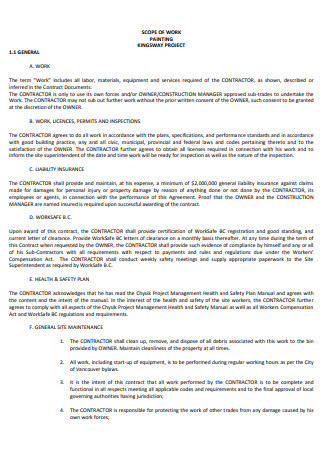
Painting Project Scope of Work
download now -
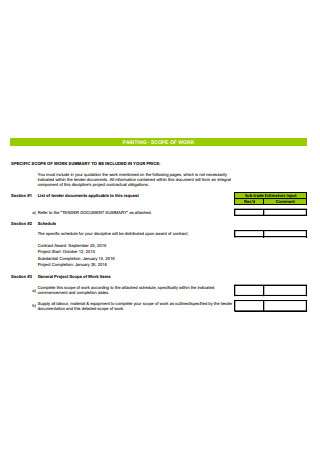
Painting Scope of Work Template
download now -
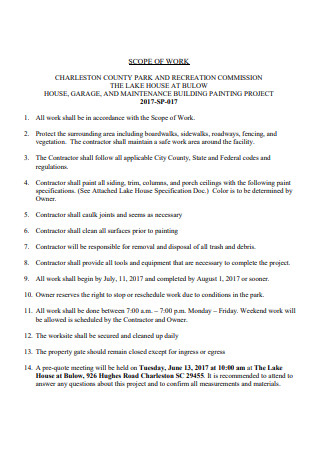
House Painting Scope of Work
download now -
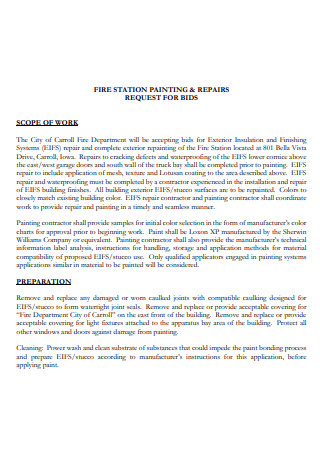
Fire Station Painting Scope of Work
download now -
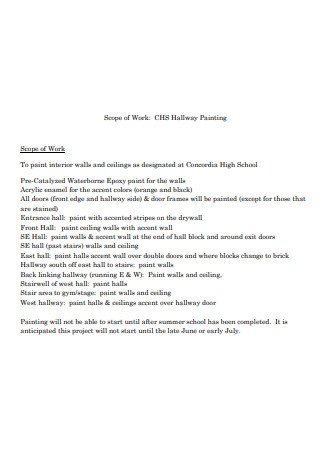
Basic Painting Scope of Work
download now -
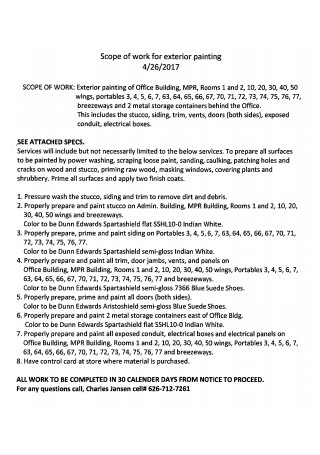
Exterior Painting Scope of Work
download now -
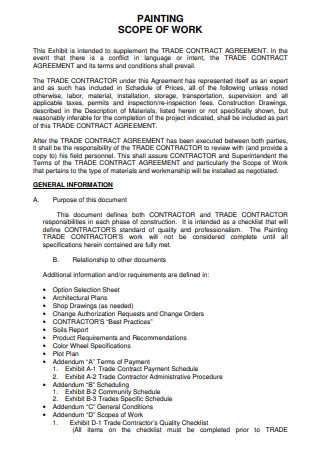
Painting Scope of Work Example
download now -

Standard Painting Scope of Work
download now -

Gymnasium Painting Scope of Work
download now -
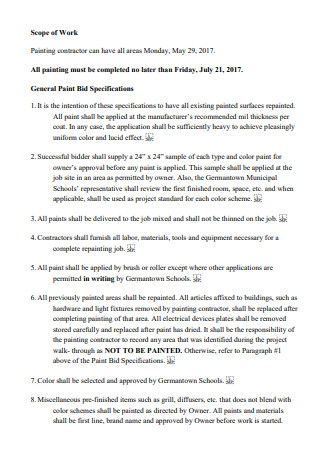
Painting Contractor Scope of Work
download now -
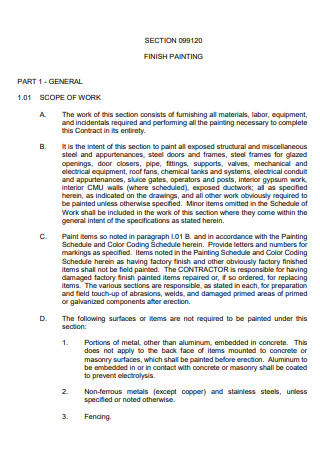
Finish Painting Scope of Work
download now -
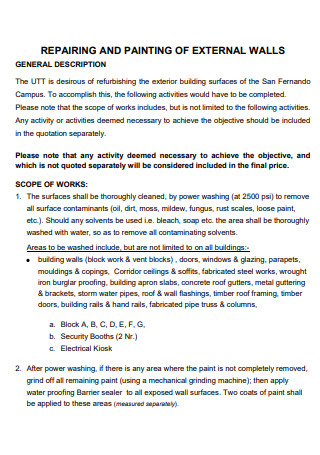
Repairing and Painting of External Walls Scope of Work
download now -
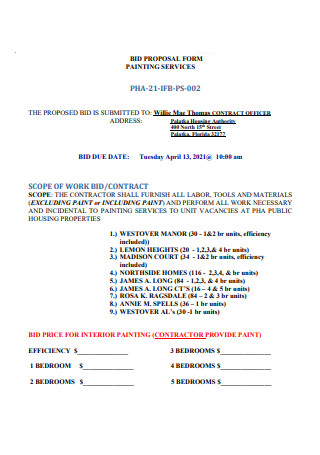
Painting Services Scope of Work
download now -
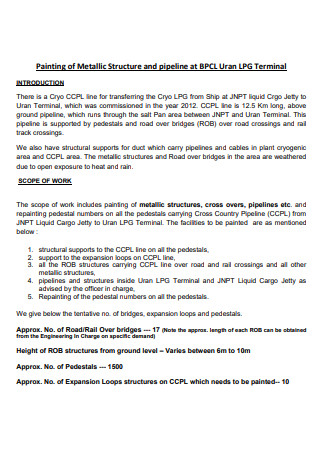
Painting Scope of Work in PDF
download now -
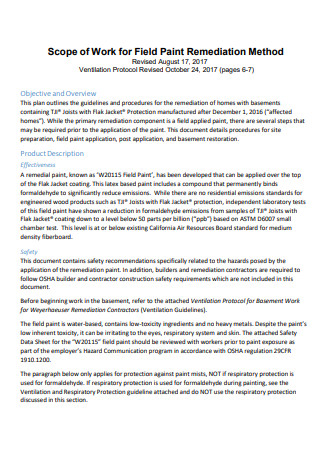
Field Paint Scope of Work
download now -
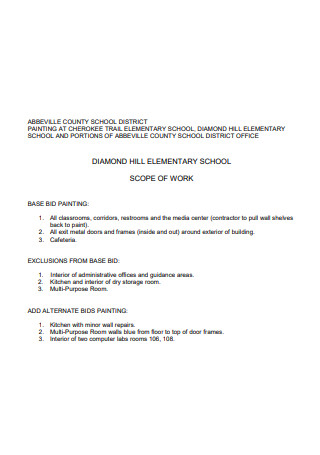
School Painting Scope of Work
download now -

Water Tank Painting Services Scope of Work
download now -

Painting Scope of Work and Schedule
download now -
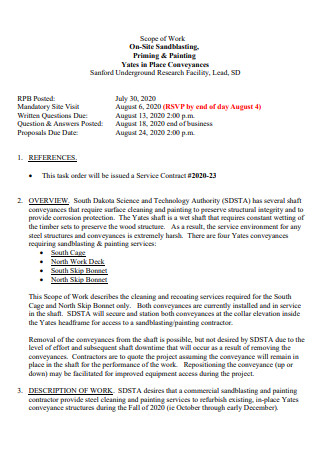
Printable Painting Scope of Work
download now -
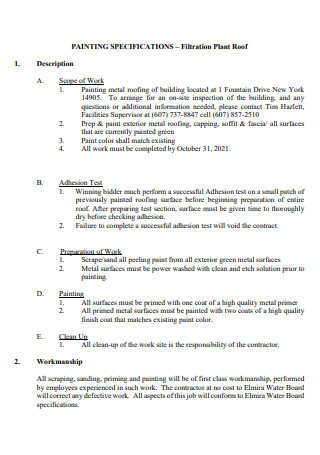
Sample Painting Scope of Work
download now -

Paint Program Scope of Work
download now -
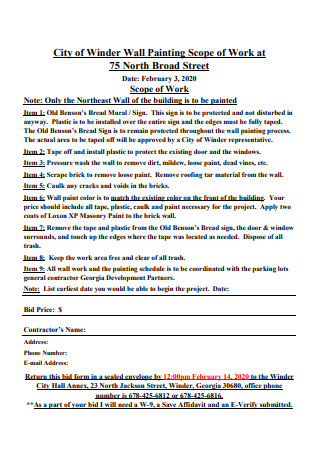
Wall Painting Scope of Work
download now -

Formal Painting Scope of Work
download now -
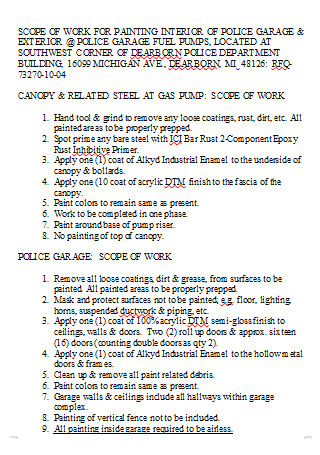
Painting Scope of Work in DOC
download now
FREE Painting Scope of Work s to Download
24+ Sample Painting Scope of Work
What Is a Painting Scope of Work?
What Should a Painting Scope of Work Include?
How to Write a Scope of Work for Painting Job
Remember to Describe in Detail
Factors to Consider before Choosing a Painter
Is the scope of work a contract?
FAQs
Why is the painting scope of work important?
Why does a painting scope of work matter?
Is it necessary to get a licensed painter?
What Is a Painting Scope of Work?
A Scope of Work (SOW) is a thorough document that explains exactly what is expected of a team executing a contract. The scope comprises information that offers direction and purpose to every aspect of the project, necessary information that project owners need to correctly budget.
A painting scope of work functions for the same purpose as that of a regular scope of work, this document specifies the area that is included in the matters of painting. If you are questioning why it needs to be a separate and unique document rather than merely coming up with a scope of work, this article defines it for you.
What Should a Painting Scope of Work Include?
The paperwork prepared prior to the start of a project is critical to its success. When you have everything ready for a painting scope of work, this would enable the painter to verify the discussion or agreement you may have made prior or even acts as a guide for them as they proceed with the project. As a result, it’s important to include the following items in your painting scope of work.
How to Write a Scope of Work for Painting Job
Since a painting scope of work acts as a Painting Contract Proposal, you would need relevant information to be documented not only to serve as a tangible agreement between you and the painter that you have contracted but also as a guide for the both of you to refer to until the project is completed. This is an essential part of a painting services scope of work because in addition to a contract, details would be necessary to clarify the agreement between you and the painter. Without further ado, the steps will now be given to you so you can write your own painting scope of work.
Step 1: Define the Project
If you and the painter already settled on the details in a verbal exchange, you would still need to add the relevant information of the project in the document. Why? Because it is human nature or tendency to forget about minor things that they do not keep track of. Although it may be an unconscious fault, it would be harder to correct it in the future. You should not wait and instead to avoid such a situation then it would be better for you to repeat the agreement in the paper.
Step 2: Give the Project Objective
Stating the objectives of the project helps the painter to identify what needs to be accomplished and what is included in their scope of work. As stated above, a background helps for the painter to connect with the purpose of the project in the first place or for them to get the atmosphere that you are going for.
Step 3: Task Management
This step applies only if you have hired multiple painters to fulfill the project or a painting company because you would need to employ multiple people for different roles. Such as if one painter is more experienced in another method, then they could be preferable in a specific task. Staying on top of their scheduling is essential, you may need an Employee Work Schedule to easily track their progress.
Step 4: Settle Required Materials
You may contact your contracted painter for this but you have to settle on the necessary materials needed for the completion of the project, whether or nor they would bring their own materials, you should know ahead of time. Not only would it delay the project if there is a lack of materials but it would also be costly to look for means in purchasing it. Which leads you to the budgeting part, which you should prepare ahead of time.
Step 5: Set a Project Schedule
Setting the timeline of the projects helps visualize to the painters and even yourself as to how long it could take until it reaches completion. You should not rush the painters otherwise the quality of the paint may not look as great. As the saying goes, ‘art takes time’, so you should set an ample amount of time for them to do their work. But not too long that they would waste a day.
Step 6: Credit Where Credit is Due
Artists put all their efforts into making a piece, the larger the canvas, the more time it takes for them to complete it. It is considered their blood, sweat, and tears in one painting. This is why it is important to attribute the painter properly, if they included their signature or symbol on a certain corner of the canvas, then you should do your best not to let it be covered or erased. Unless if they deliberately left it as an anonymous work. Make sure to include it in a Work Contract to avoid fraud or escalations.
Remember to Describe in Detail
You must realize that reading is far more difficult than viewing anything. In a single image, you can convey a million distinct details than you can in a 20-page paper. As a result, while producing a painting scope of work, be sure to include a variety of visuals and visual representations to help the painters do their job. It will be much simpler for the rest of the team to comprehend. Much more when a painting does involve more of the visual senses.
Factors to Consider before Choosing a Painter
Before you hire a painter, there are a few things you should think about. You wouldn’t want to hire just any painter out there, would you? How could you ensure they would perform their best or if they are actually a painter in the first place. Residence Style lists out important things to think of.
Is the scope of work a contract?
According to Up Counsel, the scope of work is not an actual contract but rather a document that frames or specifies the work to be done under the contract or subcontract. It is not a legally binding agreement. It merely consists of a sequence of parts that explain the work or project’s details.
FAQs
Why is the painting scope of work important?
The scope of work document is a crucial tool for ensuring that the project’s team and stakeholders have all agreed on the same thing. So that there is no confusion and no costly redos at the end, all parties involved should share the same vision for the project. It includes deadlines, deliverables, task assignments, terms and conditions, budgets, and other information to assist everyone to understand what needs to be done, why it’s essential, and when it has to be done. These types of documents guarantee that nothing is overlooked and that all moving components of the project are considered.
Why does a painting scope of work matter?
According to Facility Executive, each scope of work in painting has a distinct function, but they all lead to the same result: they provide context for the project for the teams involved and expand on the information that will impact the contract’s execution.
Is it necessary to get a licensed painter?
In their line of work, there are independent and freelance artists that have the same quality of output as others but if you want to verify their training and license, then you can opt to choose one that has it.
The bottom line is that through a painting contractor’s scope of work the work to be done, how it will be accomplished and by whom, and the intended objectives are all outlined in a clear, comprehensive document. You can make a better budget estimate by understanding exactly what a painting scope of work is and what it should contain, ensuring your project’s success even before it begins. What are you waiting for? Spruce up your space and begin contacting your chosen artist to adorn your home.
